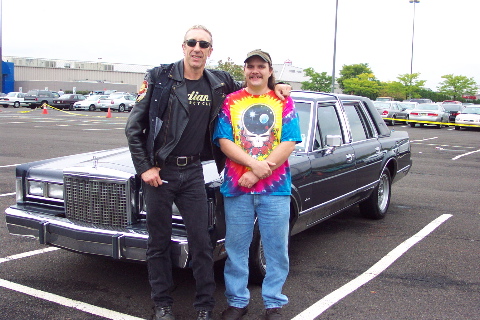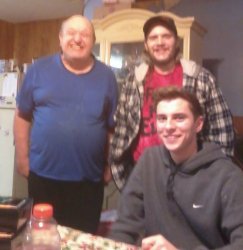try that route with a ton of coal in a ranger
 |
Announcement
Collapse
No announcement yet.
What heats brakes more?
Collapse
X
-

1986 lincoln towncar signature series. 5.0 HO with thumper performance ported e7 heads, 1.7 roller rockers, warm air intake, 65mm throttle body, 1/2" intake spacer, ported intakes, 3.73 rear with trac lock, 98-02 front brake conversion, 92-97 rear disc conversion, 1" rear swaybar, 1 3/16" front swaybar, 16" wheels and tires, loud ass stereo system, badass cb, best time to date 15.94 at 87 mph. lots of mods in the works 221.8 rwhp 278 rwt
2006 Lincoln Town Car Signature. Stock for now
1989 Ford F-250 4x4 much much more to come, sefi converted so far.
1986 Toyota pickup with LSC wheels and 225/60/16 tires.
2008 Hyundai Elantra future Revcon toad
1987 TriBurner and 1986 Alaska stokers keeping me warm. (and some pesky oil heat)
please be patient, rebuilding an empire!


-
brake on, brake off. Constantly riding the pedal will cook things and cause massive brake fade. Not much else for it. You can use engine braking to reduce the demand on the brake pedal too. I also do the brake application in spurts thing on steep hills. I might be cursing myself, but I have never experienced brake fade in any vehicle I've owned, provided the brake system was fundamentally in good shape to start with. I never even managed to fade out the drum brakes in my Beetle bad enough that there was any issue stopping the car. I heavily relied on engine braking with that car though, the brakes were terrible.86 Lincoln Town Car (Galactica).
5.0 HO, CompCams XE258,Scorpion 1.72 roller rockers, 3.55 K code rear, tow package, BHPerformance ported E7 heads, Tmoss Explorer intake, 65mm throttle body, Hedman 1 5/8" headers, 2.5" dual exhaust, ASP underdrive pulley
91 Lincoln Mark VII LSC grandpa spec white and cranberry
1984 Lincoln Continental TurboDiesel - rolls coal
Originally posted by phayzer5
I drive a Lincoln. I can't be bothered to shift like the peasants and rabble rousers
Comment
-
So is this what the phrase "pump the brakes" actually means? I had previously thought it meant stomping hard on the pedal and then releasing it, and repeating the cycle repeatedly in rapid succession. In many situations, I would expect that to result in basically a pair of dotted black lines down the road. More confusingly, the particular context in which I'm used to hearing that phrase is "pump the brakes to build up pressure", which I don't think makes any physical sense at all.2012 Mazda5 Touring | Finally working on the LTD again!

Comment
-
Depends on the context. In the snow, you want short applications and releases. On a hill, you'll want longer applications and longer releases. The speed varies but the general idea is to not hold steady on the pedal all the time.
And if you've ever bled brakes, you can pump them to build pressure when there is only a certain amount of air in the system. You'll feel it in the pedal, it will build up off the floor.86 Lincoln Town Car (Galactica).
5.0 HO, CompCams XE258,Scorpion 1.72 roller rockers, 3.55 K code rear, tow package, BHPerformance ported E7 heads, Tmoss Explorer intake, 65mm throttle body, Hedman 1 5/8" headers, 2.5" dual exhaust, ASP underdrive pulley
91 Lincoln Mark VII LSC grandpa spec white and cranberry
1984 Lincoln Continental TurboDiesel - rolls coal
Originally posted by phayzer5
I drive a Lincoln. I can't be bothered to shift like the peasants and rabble rousers
Comment
-
That's funny, I always figured the thing in low-traction situations was to carefully modulate the brakes with gentle, steady pressure so they don't lock up. At least, that's what I've always done .... conventional widsom from a lot of people seems to be, "any loss of traction is always a bad thing".
I had always assumed that the repeated pumping during brake bleeding was simply to force the air out of the system, with the pump-three-times-and-hold routine primarily to apply more pressure to the trapped air.
I've noticed that if you apply the brake with the engine off and then apply it again, it's a lot harder to push, but that the pedal resistance goes back down immediately as soon as there's vacuum to the booster. But it would seem illogical that the brake booster itself is involved in allowing the fluid to return to the master cylinder ..... or is it?2012 Mazda5 Touring | Finally working on the LTD again!

Comment
-

That is indeed the way to do it - gentle brake apply so you're right at the borderline of losing traction, but without actually losing any. If you do put too much pressure and lock up, you let off so the wheel starts rolling again, then apply the brakes again - it's a gentle apply tho, not stomping on the. That's why it's called pumping the brakes, it refers to the up/down motion of the brake pedal. There is tho the fact that if you know your vehicle good and the road conditions are fairly consistent during this you will probably hardly ever have to do apply/release the brakes like that, it's just in case you lose traction, and in this context it's really more of a figure of speech than an actual strategy to build up stupid-high line pressure.Originally posted by 1987cp View PostThat's funny, I always figured the thing in low-traction situations was to carefully modulate the brakes with gentle, steady pressure so they don't lock up. At least, that's what I've always done .... conventional widsom from a lot of people seems to be, "any loss of traction is always a bad thing".
I actually never do that, I always do a full apply then full release, never pump the brakes while bleeding - jacking up the line pressure like that can push air bubbles where they normally won't go, and if you ever worked on a RABS-equipped vehicle you'll know how much of a pain in the ass that situation is. So yeah, full on and then full off on the brake pedal a few times with the engine off, then when pedal stiffens up fire up engine and repeat full on/off a few more times to make sure all possible air gets purged.I had always assumed that the repeated pumping during brake bleeding was simply to force the air out of the system, with the pump-three-times-and-hold routine primarily to apply more pressure to the trapped air.
Well, what happens is that with the engine off you only have your pedal force to push down on the pedal, with the engine on you have the booster adding quite a lot of force on its own, thus doing most of the pushing for you. That's it, not much else to it.I've noticed that if you apply the brake with the engine off and then apply it again, it's a lot harder to push, but that the pedal resistance goes back down immediately as soon as there's vacuum to the booster. But it would seem illogical that the brake booster itself is involved in allowing the fluid to return to the master cylinder ..... or is it?
Comment
-
Just grease 'em up. With proper lubrication they won't get too hot. Should try running water through the motor just to be safe as well sigpic
sigpic
- 1990 Ford LTD Crown Victoria P72 - the street boat - 5.0 liter EFI - Ported HO intake/TB, 90 TC shroud/overflow, Aero airbox/zip tube, Cobra camshaft, 19lb injectors, dual exhaust w/ Magnaflows, Cat/Smog & AC delete, 3G alternator, MOOG chassis parts & KYB cop shocks, 215/70r/15s on 95-97 Merc rims
- 2007 Ford Escape XLT - soccer mom lifted station wagon - 3.0 Duratec, auto, rear converter delete w/ Magnaflow dual exhaust
- 2008 Mercury Grand Marquis Ultimate Edition - Daily driver - 4.6 2 valve Mod motor, 4R75E, 2.73s. Bone stock
Comment
Comment